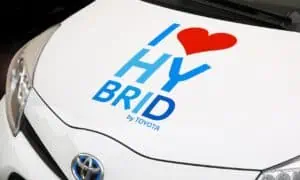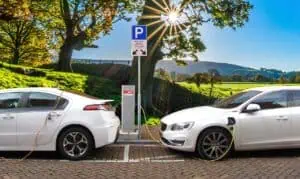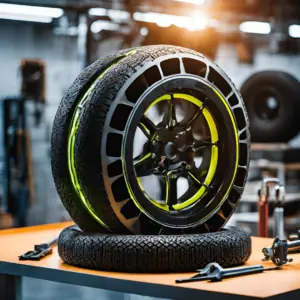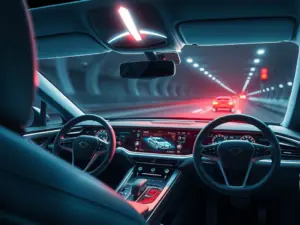Are you thinking about making the switch to an electric vehicle (EV) but feeling a bit overwhelmed? You’re not alone.
As someone who’s been through the process, I remember the mix of excitement and uncertainty that came with
considering my first electric car purchase. This electric vehicle guide aims to provide you with all the essential
information you need to navigate the world of EVs confidently. Let’s plug in and get started!
If you’re more interested in hybrid cars, check out Plug Into The Future: Shock Commutes With Hybrid Cars.
What is an Electric Car?
Before we dive into the nitty-gritty, let’s start with the basics. An electric car, or EV, is a vehicle that runs on electricity
stored in rechargeable batteries, rather than gasoline or diesel. There are a few types:
- Battery Electric Vehicles (BEVs): These run entirely on electricity.
- Plug-in Hybrid Electric Vehicles (PHEVs): These have both an electric motor and a gas engine.
- Hybrid Electric Vehicles (HEVs): These use a gas engine primarily but have an electric motor to improve efficiency.
For this guide, we’ll focus mainly on BEVs, as they represent the full electric experience.
The Environmental Impact: A Breath of Fresh Air
One of the biggest reasons people consider buying electric cars is their potential to reduce environmental impact.
Here’s the scoop:
- Zero direct emissions: EVs produce no tailpipe emissions, which means cleaner air in our cities and
- neighborhoods.
- Lifecycle emissions: While manufacturing an EV can produce more emissions initially, studies show that over their
- lifetime, EVs have a lower carbon footprint than gas-powered cars.
- Energy source matters: The environmental benefit is even greater when your electricity comes from renewable
- sources like solar or wind.
According to recent data, global EV sales reached 14.4 million units, showing a significant shift towards cleaner
transportation. By choosing an EV, you’re joining a growing movement towards a more sustainable future.
Cost of Ownership: Breaking Down the Numbers
When it comes to buying electric cars, understanding the total cost of ownership is crucial for making an informed
decision. Let’s crunch some numbers:
- Initial Purchase Price:
EVs often have a higher sticker price than comparable gas cars.
However, government incentives can significantly reduce this cost. In the U.S., federal tax credits of up to
$7,500 are available for many EV models. - Fuel Costs:
Electricity is generally cheaper than gas. On average, it costs about $0.05 per mile to drive an EV, compared
to $0.10-$0.15 for a gas car.
Example: If you drive 12,000 miles a year, you could save $600-$1,200 annually on fuel costs. - Maintenance:
EVs have fewer moving parts, which means lower maintenance costs.
A study by Consumer Reports found that EV owners spend about half as much on maintenance compared to
gas car owners. - Long-term Savings:
While the upfront cost might be higher, the savings on fuel and maintenance can offset this over time.
Some estimates suggest that over 5 years, you could save $6,000-$10,000 compared to a similar gas car.
Maintenance Requirements: Less Time at the Shop
One of the perks of EV ownership is the reduced maintenance needs. Here’s what you need to know:
- No oil changes: This is a big one. Say goodbye to those regular oil change appointments.
- Fewer moving parts: With no internal combustion engine, there are fewer components that can wear out or break
- down.
- Regenerative braking: This system helps extend the life of your brake pads.
- Battery care: The main maintenance focus is on the battery. Most EV batteries are designed to last 8-10 years or
- more.
According to recent data, maintenance costs for EVs can vary. For example, a Nissan Leaf might cost around $1,724
over 5 years, while a Kia EV6 could be as low as $651. Luxury models like the BMW iX might have higher costs, around
$8,000 over 5 years. Always check specific models for the most accurate estimates.
Advantages of Electric Cars: More Than Just Green
Making an electric car purchase is a significant decision that requires careful consideration of various factors. Here are
some key advantages:
- Lower operating costs: As we’ve seen, fuel and maintenance costs are generally lower for EVs.
- Instant torque: EVs provide quick acceleration, making them fun to drive.
- Quiet operation: Enjoy a peaceful ride without engine noise.
- Home charging: Wake up to a “full tank” every morning by charging at home.
- HOV lane access: In many areas, EVs qualify for high-occupancy vehicle lane access, even with a single occupant.
- Cutting-edge technology: Many EVs come equipped with the latest in-car tech and driver assistance features.
Challenges and Considerations: Eyes Wide Open
While EVs offer many benefits, it’s important to be aware of potential challenges
- Range anxiety: Concern about running out of charge before reaching your destination.
- Charging time: It takes longer to charge an EV than to fill up a gas tank.
- Limited model options: While growing, there are still fewer EV models to choose from compared to gas cars.
- Higher upfront cost: As mentioned, the initial purchase price can be higher.
- Charging infrastructure: While improving rapidly, charging stations are not as ubiquitous as gas stations.
- Home charging: Most EV owners charge at home overnight using a Level 2 charger.
Range and Charging Infrastructure: Powering Your Journey
Range is often a top concern for those considering how to buy an electric car. Here’s what you need to know:
Current ranges: Many new EVs offer ranges of 200-300 miles on a single charge, with some luxury models exceeding 400 miles.
Charging options:
- Home charging: Most EV owners charge at home overnight using a Level 2 charger.
- Public charging: There are over 4 million public charging stations worldwide, with numbers growing rapidly.
- Fast charging: DC fast chargers can add 100-200 miles of range in about 30 minutes.
When planning longer trips, apps like PlugShare or your car’s built-in navigation can help you locate charging station along your route.
Performance and Driving Experience: A New Kind of Fun
Buying an EV involves more than just choosing a model; it’s about adapting to a new way of thinking about transportation. Here’s what to expect:
- Instant acceleration: Electric motors provide full torque immediately, resulting in quick and smooth acceleration.
- Low center of gravity: Batteries are typically located in the floor, improving handling and stability.
- Regenerative braking: This system can take some getting used to but can make driving more efficient and even
- allow for one-pedal driving in some models.
- Quiet ride: The lack of engine noise creates a serene driving experience, though it may require extra awareness of your surroundings.
What to Do If Your EV Runs Out of Charge: Stay Calm and Charge On
While it’s rare, knowing what to do if your electric car runs out of charge can provide peace of mind. Here are some steps to take:
- Don’t panic: Your car will give you plenty of warning before you run out of charge.
- Use your car’s navigation or a smartphone app to find the nearest charging station.
- If you can’t reach a charging station, call for roadside assistance. Many EV manufacturers offer specialized EV
assistance. - Some roadside services offer mobile charging, providing enough juice to get you to the nearest charging station.
- In a worst-case scenario, your EV can be towed to the nearest charging point.
To prevent running out of charge:
- Plan your routes, especially for longer trips.
- Take advantage of opportunistic charging when available.
- Keep an eye on your range and plan charging stops before you’re running low.
- Consider a portable Level 1 charger for emergencies.
Conclusion: Your Electric Future Awaits
As we’ve explored in this electric car buyers guide, making the switch to an EV is an exciting journey that comes with
numerous benefits and some considerations. From lower operating costs and environmental benefits to a new and often
more enjoyable driving experience, EVs offer a compelling package for many drivers.
Remember, buying an EV is not just about the car; it’s about embracing a new lifestyle. It requires a bit of planning and
a shift in mindset, but many EV owners find the benefits far outweigh the adjustments.
As charging infrastructure continues to expand and technology improves, the EV experience will only get better.
Whether you’re ready to make the switch now or you’re still exploring your options, the future of driving is electric, and
it’s looking brighter than ever.
Ready to take the next step? Start by test driving a few different EV models to get a feel for what suits you best. And
don’t forget to check out the latest government incentives in your area – they might make your dream EV more
affordable than you think





























